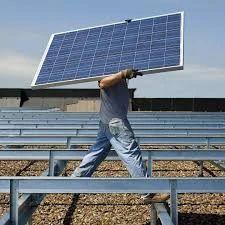on grid solar inverter 3kw
Understanding On-Grid Solar Inverters A Focus on 3kW Systems
In recent years, the push for sustainable energy solutions has become more prominent, with solar power emerging as one of the leading alternatives. Among the various components of a solar power system, the inverter plays a critical role, particularly when it comes to on-grid systems. In this article, we will explore the significance of on-grid solar inverters, with a special focus on 3kW models, their functions, advantages, and considerations for homeowners.
What is an On-Grid Solar Inverter?
An on-grid solar inverter, also known as a grid-tied inverter, is a device that converts the direct current (DC) generated by solar panels into alternating current (AC) suitable for use in homes and businesses. This type of inverter is especially beneficial for those connected to the electricity grid. Unlike off-grid systems, on-grid setups can feed surplus electricity back into the grid, allowing homeowners to benefit from net metering arrangements.
The 3kW Solar Inverter An Overview
A 3kW solar inverter is designed to handle a solar array with a peak production capacity of approximately 3 kilowatts. This size is generally suitable for smaller residential applications, making it an excellent option for families who consume less energy or wish to offset a portion of their utility bills. A 3kW system typically consists of around 10 to 12 solar panels, depending on their wattage.
How Does an On-Grid Solar Inverter Work?
The operation of an on-grid inverter is relatively straightforward. Solar panels generate DC electricity during the day when sunlight is available. The inverter takes this DC power and converts it into AC electricity that can be used to power household appliances. If the solar energy produced exceeds the home’s consumption, the surplus electricity is sent back to the grid. In many regions, utility companies provide credits for this surplus energy, thus effectively lowering the homeowner’s electricity bill.
Advantages of Using a 3kW On-Grid Inverter
1. Cost-Effective A 3kW solar system is often more affordable than larger systems, making it an accessible option for many homeowners. The initial investment is lower, and with various government incentives available, the long-term savings on electricity bills can be substantial.
2. Ease of Installation Smaller systems typically require less installation time and fewer structural modifications. This means homeowners can quickly transition to solar energy without significant disruption.
3. Scalability If energy needs change over time, homeowners can easily add additional panels to boost their system's capacity, though considerations regarding the inverter’s limits must be taken into account.
on grid solar inverter 3kw

4. Environmental Impact By utilizing solar energy, homeowners can significantly reduce their carbon footprint. Solar energy is clean and renewable, contributing to a sustainable future.
5. Grid Independence Although on-grid systems rely on the electricity grid, they still offer a degree of energy independence. Homeowners can produce their own power and lower their reliance on traditional energy sources.
Considerations When Choosing a 3kW Inverter
While 3kW on-grid inverters offer numerous benefits, there are several important factors to consider before making a purchase
1. Compatibility Ensure that the inverter is compatible with your specific solar panel configuration and the characteristics of the local grid.
2. Quality and Warranty Investing in a high-quality inverter can make a significant difference in system performance. Look for reputable brands that offer comprehensive warranties.
3. Monitoring Features Many modern solar inverters come with monitoring features that allow users to track their energy production in real-time. This can help homeowners optimize their energy usage and identify any issues promptly.
4. Installation Costs While the inverter itself may be affordable, consider the total cost of installation, which can include labor, permits, and additional components.
5. Local Incentives Investigate local regulations and incentives for installing solar energy systems, as these can affect the overall cost and return on investment.
Conclusion
In conclusion, a 3kW on-grid solar inverter is a viable option for homeowners looking to adopt solar energy. Its combination of affordability, ease of installation, and environmental benefits make it a strong contender for those seeking to reduce their electricity bills while contributing to a sustainable future. As the demand for renewable energy continues to rise, understanding the technology and options available will empower more households to embrace the benefits of solar power.
-
String Solar Inverter: The High-Efficiency Solution for Smart Solar EnergyNewsJul.14,2025
-
Revolutionizing Rooftop Energy with the Power of the Micro Solar InverterNewsJul.14,2025
-
Power Independence with Smart Off Grid Solar Inverter SolutionsNewsJul.14,2025
-
On Grid Solar Inverter: Powering the Future with Smart Grid IntegrationNewsJul.14,2025
-
Monocrystalline Solar Panels: High-Efficiency Power for the Future of Clean EnergyNewsJul.14,2025
-
Bifacial Solar Panel: A Smarter Investment for Next-Generation Energy SystemsNewsJul.14,2025







